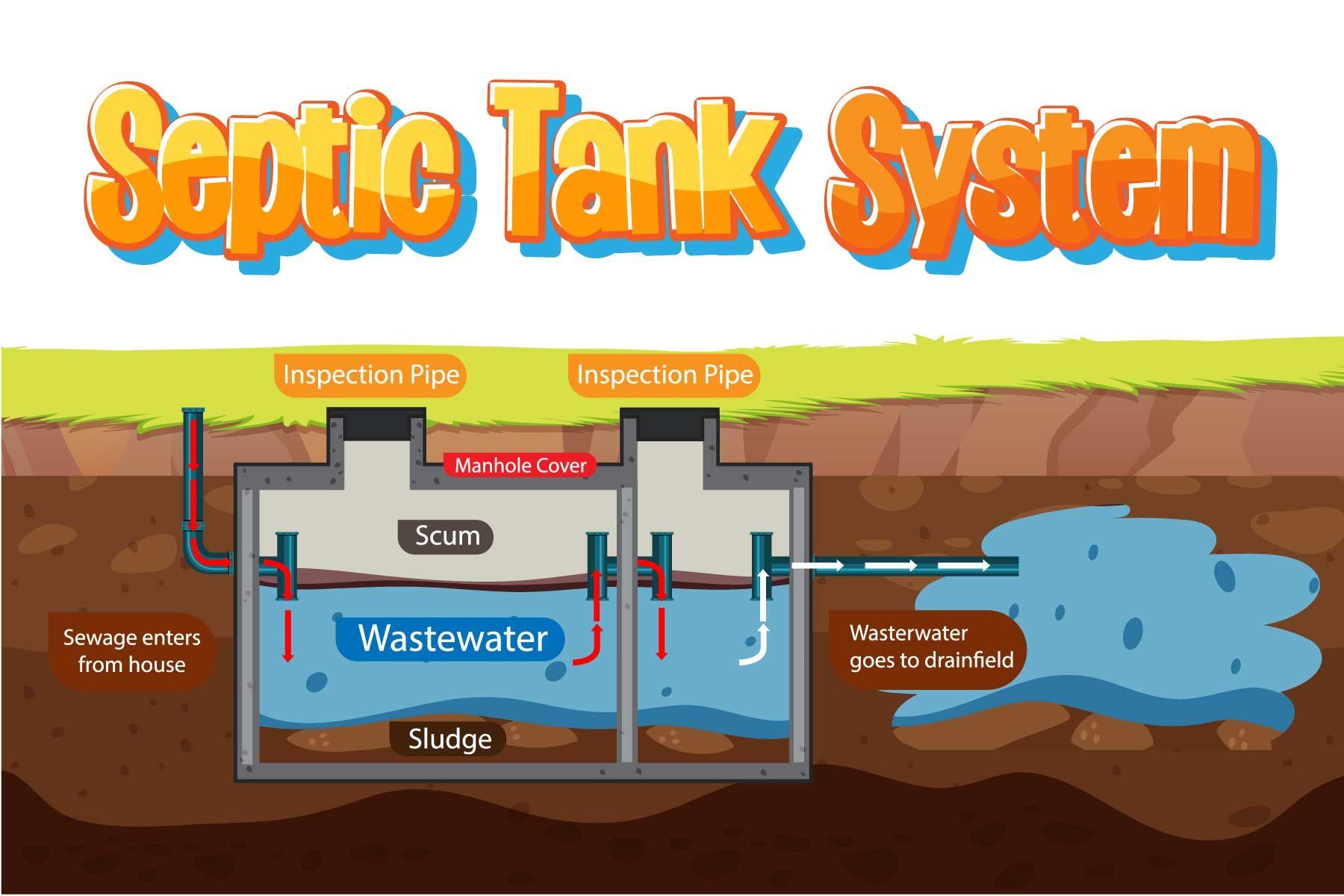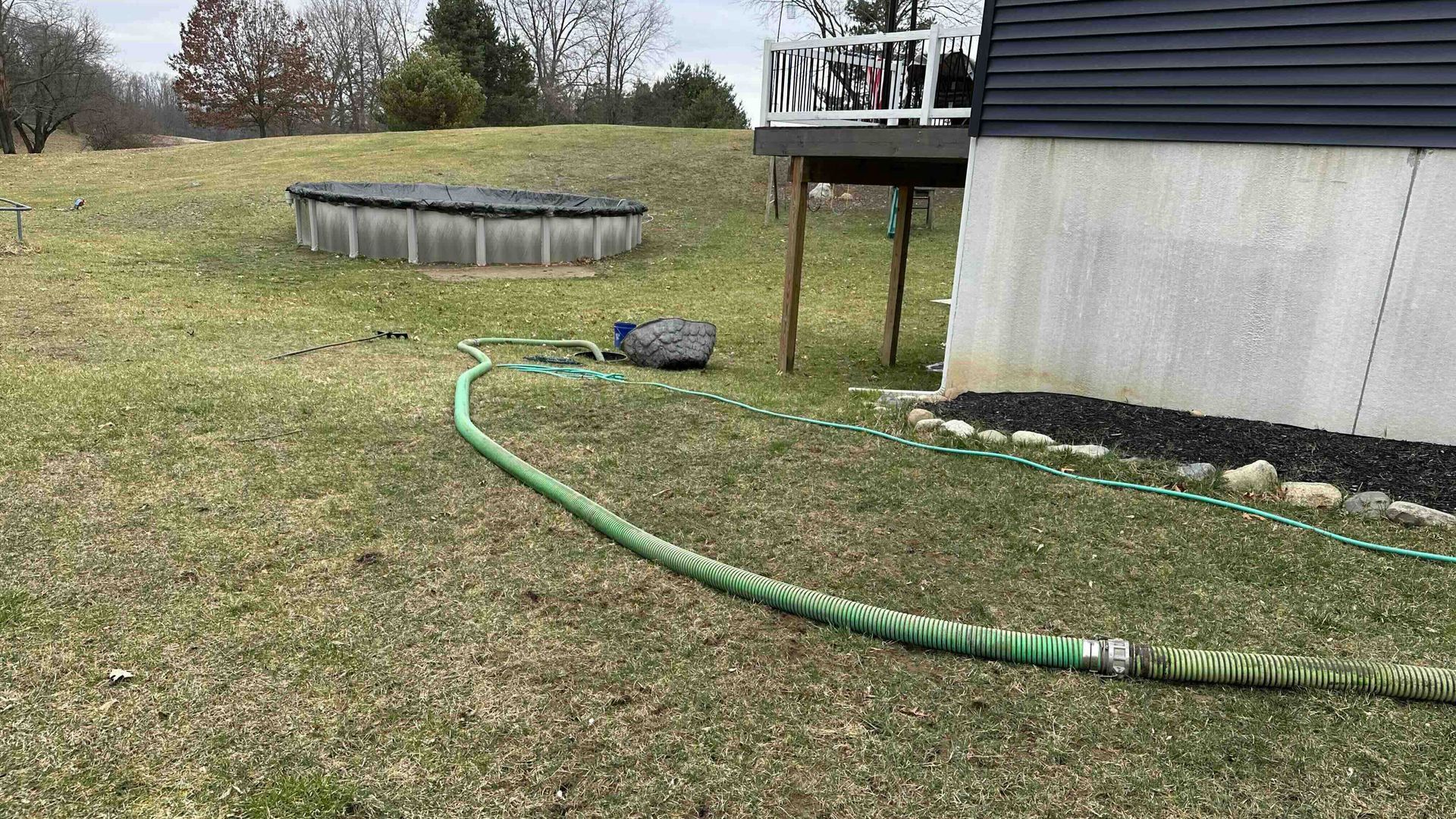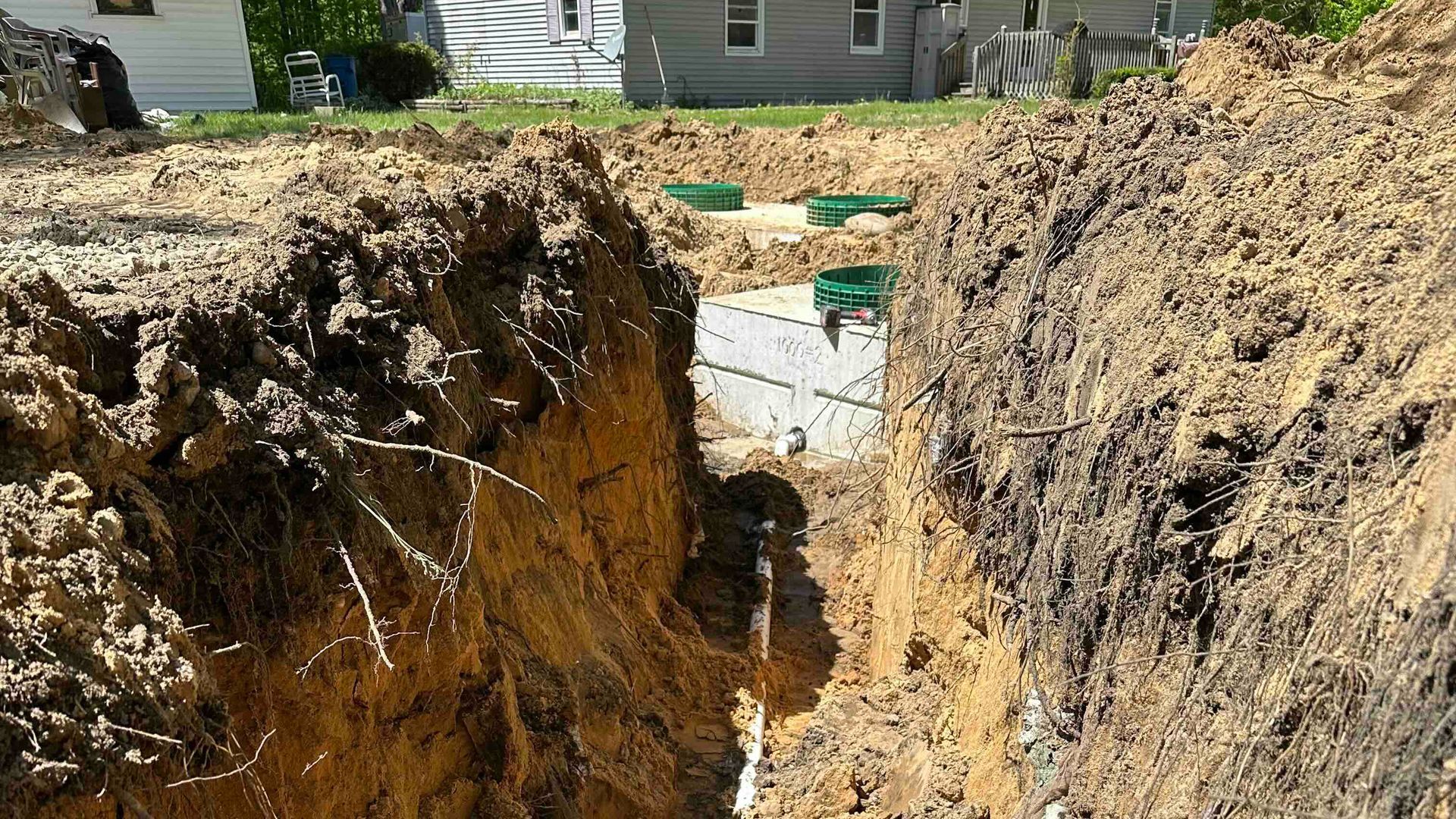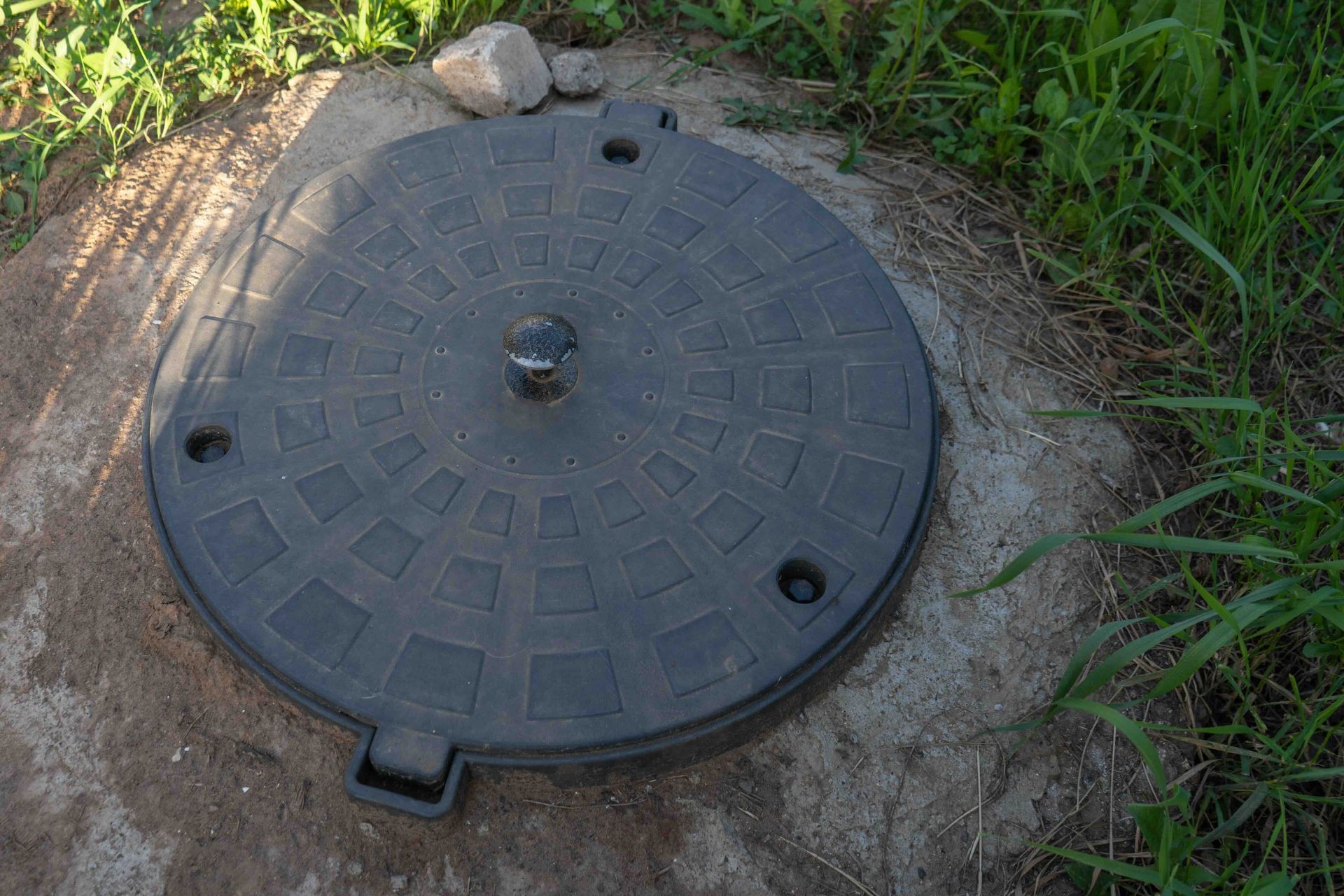The Do's and Don'ts of Septic Tank Care
Adherence to essential guidelines is crucial for a septic system to endure over time. By adhering to a set of common do’s and don’ts, homeowners can ensure the longevity and efficiency of their septic systems.
Among the do’s implementing eco-friendly alternatives for household hazardous waste, familiarizing oneself with the system's layout, and maintaining comprehensive records of system activities are the most important ones. Read on and learn how you can master the art of septic tank maintenance with today’s blog.
DO'S
Do Use Eco-Friendly Alternatives
It's imperative to prioritize using substitutes for household hazardous waste to safeguard the environment and human health. Opting for eco-friendly alternatives reduces the harmful impact on ecosystems and minimizes potential risks associated with toxic substances. By choosing greener options for cleaning products, paints, and other household chemicals, individuals can significantly contribute to environmental preservation.
Do Understand the System Layout
Familiarizing yourself with the location of your septic tank and drain field is paramount for effective maintenance. By learning the layout of these crucial components, homeowners can better understand their property's infrastructure and ensure proper care. Keeping a detailed sketch of the septic system handy, alongside maintenance records, facilitates service visits and enhances overall system management.
Do Protect the Drain Field
Covering the drain field with a grass cover serves as a vital protective measure against erosion and excess water accumulation. This simple yet effective technique promotes soil stability and aids in the efficient removal of surplus water, thereby preserving the integrity of the drain field. Maintaining a healthy grass cover also contributes to the natural filtration process, optimizing the system's functionality.
Do Ensure the Accessibility of the Septic Tank Cover
Ensuring accessibility to the septic tank cover is essential for routine inspections and pumpings. If necessary, installing risers simplifies tank access and facilitates maintenance tasks. Homeowners can promptly address any issues and uphold the system's performance by keeping the septic tank cover easily reachable.
Do Maintain Comprehensive Records
Detailed records of all septic system activities are vital for effective management and long-term maintenance. This includes documenting repairs, pumpings, inspections, permits issued, and any other maintenance activities undertaken. By maintaining thorough records, homeowners gain valuable insights into the system's history, which aids in identifying trends, tracking performance, and making informed decisions regarding upkeep and upgrades. These records also serve as essential documentation for regulatory compliance and may be required for insurance claims or property transfers.
Do Manage Water Sources
Diverting excess water sources away from the septic system is essential to prevent overloading and potential system failure. Roof drains, house footing drains, and sump pumps should be directed away from the drain field to minimize the risk of soil saturation and impairment of wastewater treatment. Proper drainage solutions, such as gutter extensions and French drains, help redirect runoff and groundwater away from the septic system, preserving its functionality and longevity.
Do Schedule Pump-Outs
Regular septic tank pump-outs by a licensed contractor are imperative to maintain optimal system performance and prevent clogging and backups. The frequency of pump-outs depends on factors such as household size, usage, and tank capacity.
Generally, it is recommended to schedule pump-outs every 3 to 5 years, although individual circumstances may warrant more frequent servicing. By adhering to a regular pumping schedule, homeowners ensure the removal of accumulated solids and grease, thereby reducing the risk of system malfunctions and extending the septic system's lifespan.
Do Invest in Professional Septic Tank Services
Promptly seeking professional assistance is crucial whenever problems arise with the septic system or signs of potential failure become apparent. Experienced professionals can accurately diagnose issues, perform necessary repairs, and offer expert system maintenance and upgrade guidance.
Common indicators of septic system problems include foul odors, slow drainage, gurgling sounds in plumbing fixtures, and pooling water around the drain field.
Ignoring these warning signs can lead to more severe issues and costly repairs down the line. By addressing problems promptly, homeowners mitigate the risk of extensive damage to the septic system and minimize disruptions to household activities.

DON'TS
Don't Drive Over Your Septic Tank
Driving over the septic tank or drain field poses a significant risk of structural damage to these vital septic system components. The weight and pressure exerted by vehicles can cause soil compression, leading to cracks, leaks, or even collapse of the tank or drain field.
Additionally, the mechanical stress from vehicular traffic can disrupt the natural filtration and drainage processes, compromising the system's effectiveness. Therefore, it is crucial to refrain from driving over the septic tank or drain field to preserve their integrity and functionality.
Don't Flush Anything Else in Your Toilet
Despite their marketing claims, flushable wipes pose a significant threat to septic and municipal sewer systems. These wipes do not break down as readily as toilet paper and can accumulate in the septic tank, causing clogs and backups.
Even if they make it through the septic system, flushable wipes can cause blockages in sewer lines and wastewater treatment facilities, leading to costly repairs and environmental contamination. Therefore, it is essential to avoid flushing flushable wipes and dispose of them in the trash instead.
Don't Plant Anything That Might Damage Your Septic Tank
Planting anything other than grass over or near the drain field can have detrimental effects on its integrity and functionality. The roots of trees or shrubs planted near the drain field may infiltrate the drain lines, causing blockages and damage.
Additionally, plant water uptake can disrupt the soil's ability to filter and treat wastewater properly, leading to system failure. Therefore, it is advisable to refrain from planting anything other than grass over or near the drain field to avoid potential complications and maintain optimal performance.
Don't Excavate or Build Over the Drain Field
Digging in the drain field or constructing structures over it can compromise its accessibility and functionality. Excavation activities can disturb the soil and disrupt effluent distribution, leading to uneven drainage and potential system failure.
Similarly, building structures such as sheds or driveways over the drain field can impede access for maintenance and repairs, hindering proper septic system care. Therefore, it is essential to refrain from digging or building anything over the drain field to ensure its integrity and accessibility for ongoing maintenance.
Don't Cover the Drain field with Asphalt or Concrete
Covering the drain field with a hard surface such as concrete or asphalt is strongly discouraged as it can impede the natural processes of soil filtration and water absorption. Unlike grass, which allows for proper aeration and water penetration, hard surfaces create barriers that prevent essential drainage and inhibit effluent dispersal.
This obstruction can lead to wastewater pooling on the surface, soil compaction, and, ultimately, system failure. Therefore, it is imperative to avoid covering the drain field with hard surfaces to maintain its functionality and prevent potential issues.
Don't Use Unsafe Chemical Additives
Using septic tank additives is generally discouraged as these products often fail to provide significant benefits and may even pose risks to the system. Contrary to marketing claims, septic tank additives are unlikely to enhance the performance or longevity of the system and may disrupt the natural balance of bacteria essential for wastewater treatment.
Furthermore, certain additives contain chemicals that can harm beneficial bacteria or contribute to clogging and corrosion within the system. Therefore, it is advisable to refrain from using septic tank additives and instead focus on proper maintenance practices to ensure optimal system function.
Don't Let Condensate Enter the Septic System
Preventing backwash from home water softeners or condensate from air conditioners or heat pumps from entering the septic system is crucial to avoid potential contamination and adverse effects on system performance.
Both water softener backwash and condensate contain substances that can disrupt the biological processes within the septic tank and drain field, leading to imbalances in microbial activity and potential system failure.
Implementing separate disposal methods for these wastewater streams, such as directing them to a separate drainage system or municipal sewer, helps mitigate the risk of contamination and protects the integrity of the septic system.
Don't Go Into Your Tank On Your Own
Entering the septic tank is highly hazardous and should never be attempted by untrained individuals. The confined space of the tank can harbor toxic gases such as hydrogen sulfide, methane, and carbon dioxide, which pose serious health risks, including asphyxiation and chemical exposure.
Additionally, oxygen depletion within the tank can further exacerbate the danger of entering.
Any maintenance or inspection work on the septic tank should be conducted from outside the tank using appropriate equipment and safety protocols. By prioritizing safety and avoiding entry into the septic tank, homeowners can mitigate the risk of accidents and ensure their well-being and that of others.
Key Takeaways
Maintaining a septic system requires adherence to a set of DO's and DON'Ts to ensure its longevity and proper functioning. DO prioritize using eco-friendly alternatives for household hazardous waste to protect the environment and human health.
Familiarize yourself with the system's layout, including the location of the septic tank and drain field, to facilitate effective maintenance. Protect the drain field by covering it with grass, which promotes soil stability and aids in water removal. Ensure accessibility to the septic tank cover for inspections and maintenance tasks and keep comprehensive records of all system activities.
You might also like
REQUEST A SERVICE
We will get back to you as soon as possible
Please try again later
Quick & Reliable
We are available 24/7 via phone or email
Navigation
Services
WORKING HOURS
- Mon - Fri
- -
- Saturday
- Appointment Only
- Sunday
- Closed
24 Hour Emergency Service:
888-800-1472
Navigation
Services
WORKING HOURS
- Mon - Fri
- -
- Saturday
- Appointment Only
- Sunday
- Closed
24 Hour Emergency Service:
888-800-1472
Navigation
Services
WORKING HOURS
- Mon - Fri
- -
- Saturday
- Appointment Only
- Sunday
- Closed
24 Hour Emergency Service:
888-800-1472
SERVIng west michigan and surrounding areas
Battle Creek, Byron Center, Caledonia, Grand Ledge, Grand Rapids, Middleville, Nashville, Plainwell, and Wayland
All Rights Reserved | AdeptSeptic Services
Website by SPECK DESIGNS
All Rights Reserved | AdeptSeptic Services
Website by SPECK DESIGNS






